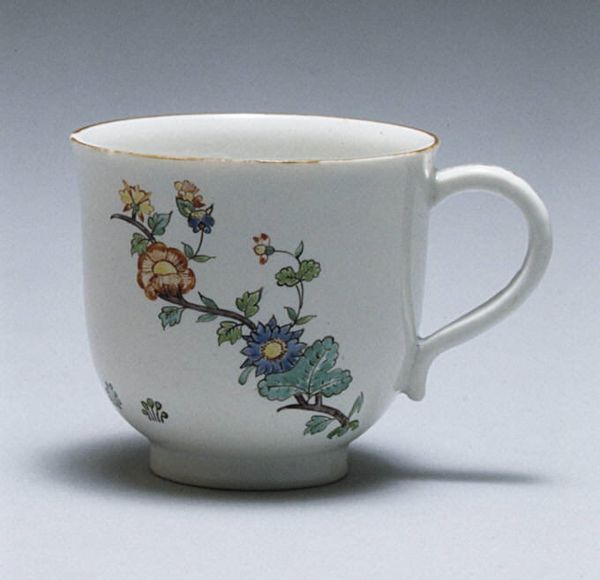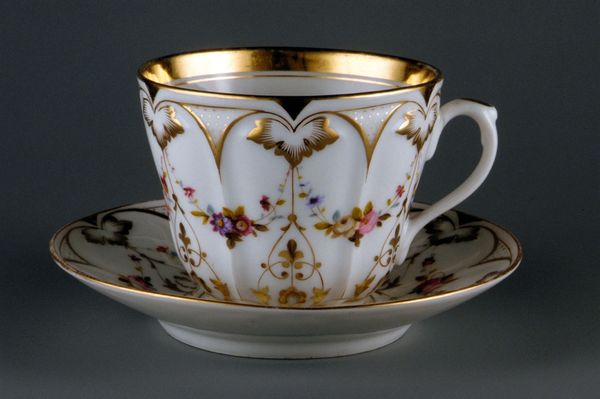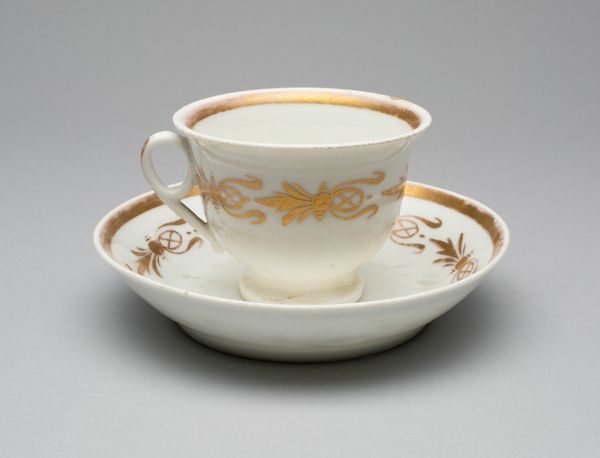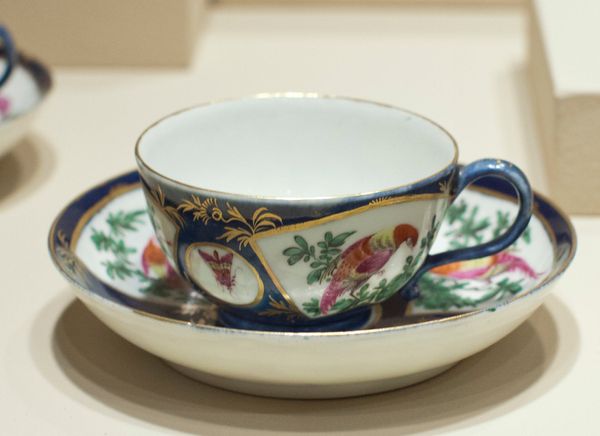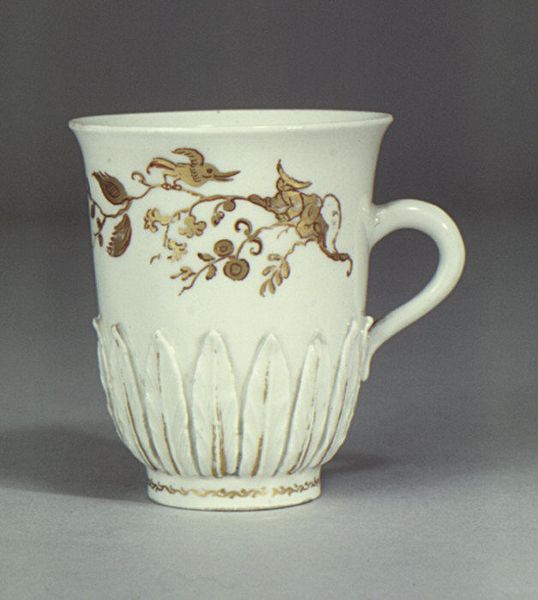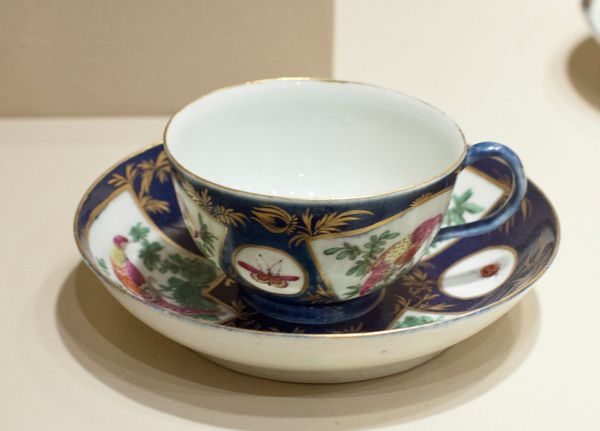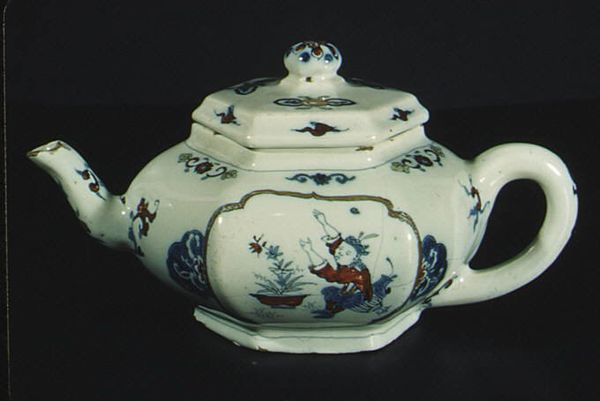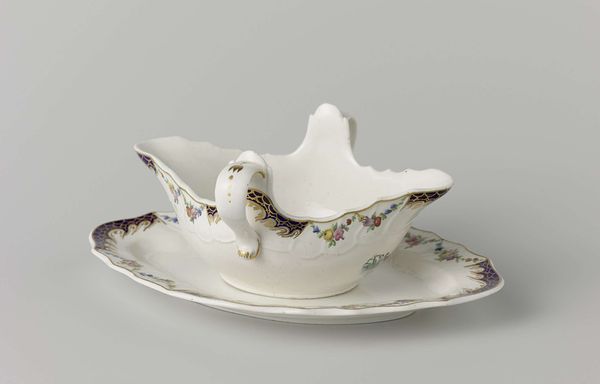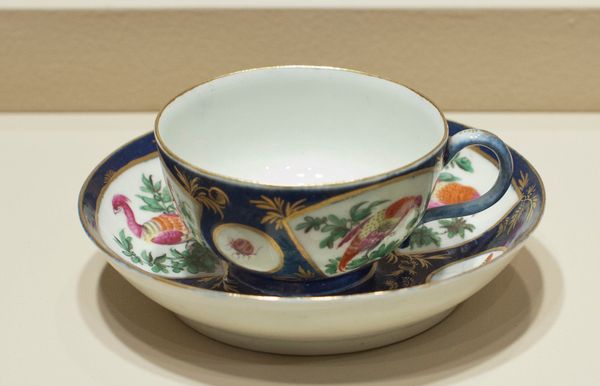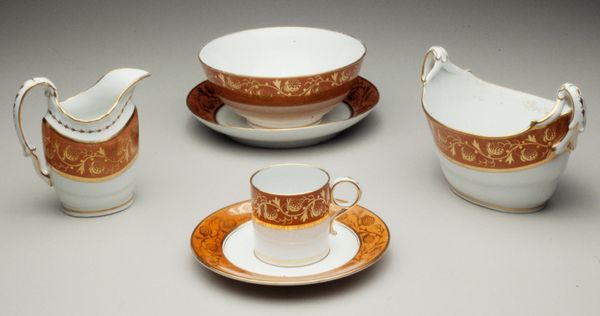
ceramic, porcelain, sculpture
#
ceramic
#
porcelain
#
sculpture
#
ceramic
#
decorative-art
#
rococo
Dimensions: Height (cup .365a): 1 7/8 in. (4.8 cm); Diameter (saucer .365b): 5 in. (12.7 cm)
Copyright: Public Domain
Editor: So, this cup and saucer were crafted between 1750 and 1765 by the Frankenthal Porcelain Manufactory. They're currently housed in the Metropolitan Museum of Art. I find the delicate floral patterns and the Rococo style really charming. What's your interpretation of this piece? Curator: I see more than mere charm. This porcelain set is a potent signifier of class and gender during the mid-18th century. Consider the exclusivity of porcelain at the time. Who had access to such refined objects? These pieces weren't merely functional; they performed a social role, announcing the wealth and taste of those who possessed them. Editor: That’s an interesting point! It definitely speaks to luxury. Curator: Exactly. Now think about the imagery – the delicate floral patterns, the small scale. How do these motifs reinforce societal expectations around femininity and domesticity? Were the women drinking tea from these cups empowered, or trapped within their roles? Editor: I guess it's easy to overlook the critical perspectives behind seemingly beautiful things. I hadn’t really considered that! Curator: It’s crucial to remember that even decorative arts are embedded within systems of power. Examining them critically allows us to unravel the complexities of the past and draw connections to contemporary dialogues on identity and representation. We should always question whose stories are being told – and whose are being left out. Editor: I see what you mean. It's made me think differently about decorative arts. There’s so much more depth when viewed with those lenses. Curator: Precisely! By understanding these historical and social dynamics, we enrich our understanding and appreciation of art.
Comments
No comments
Be the first to comment and join the conversation on the ultimate creative platform.
